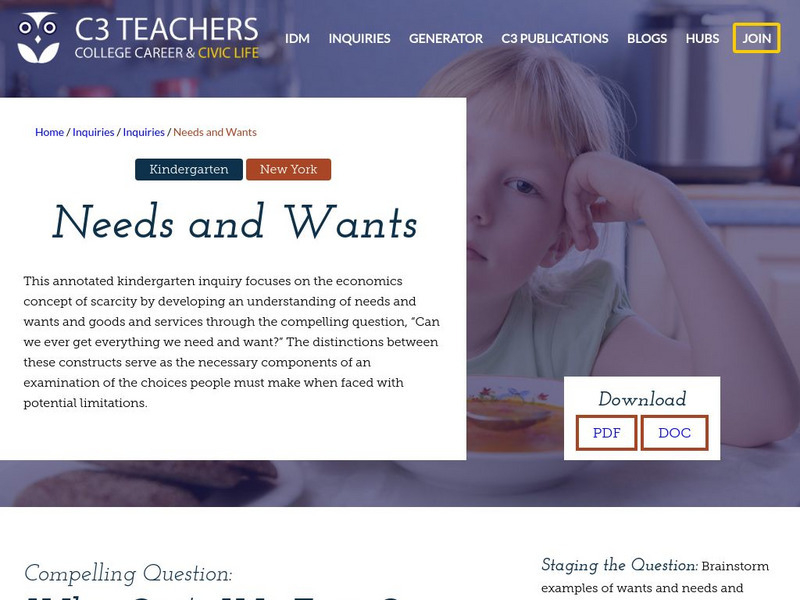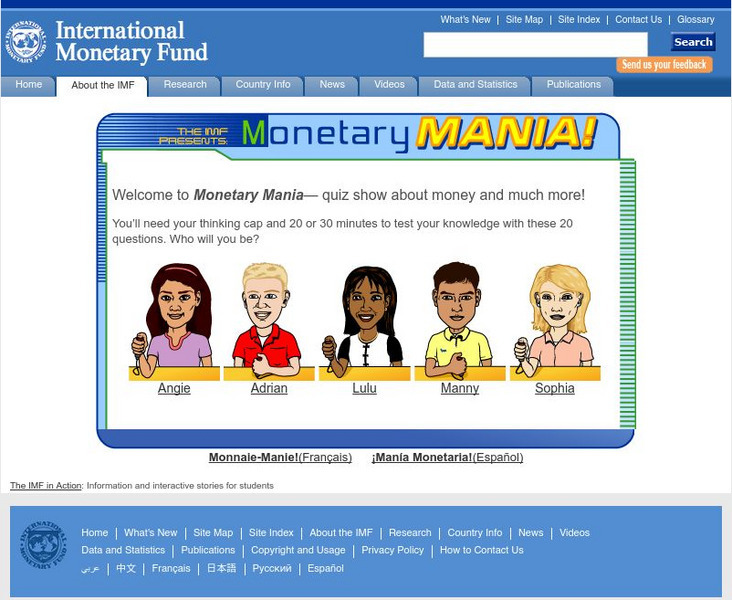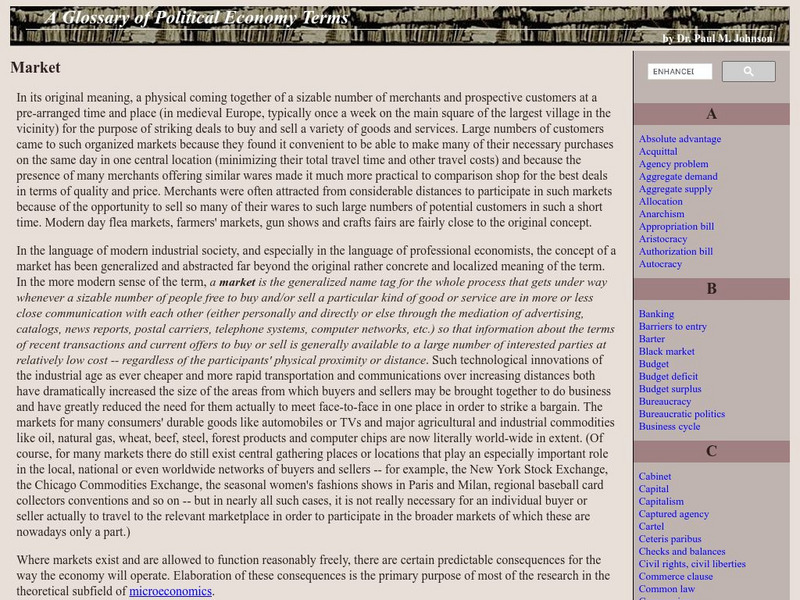Curated OER
TRADERS' GAME
Middle schoolers play a game aimed at demonstrating how relationships with other communities or countries affect the food and fiber system. The game simulates the unequal distribution of natural resources which creates the need for...
Curated OER
Goods and Services Scavenger Hunt
First graders conduct research into the concepts of goods and services. The information is used in order to create a definition for each concept. Then the information is organized using the scavenger hunt format. Further extension to the...
Curated OER
Goods and Services
Students describe the difference between goods and services. Using magazines, they work together to create a collage in which they note the differences between goods and services. They present their collage to the class and complete a...
Curated OER
Radio Program #16-Sustainability
High schoolers identify elements of sustainable industries in the area and interpret their influence on the local economy. They discuss the types of goods and services that are provided by sustainable industries. Students observe common...
Curated OER
Texas Industries Then and Now
Middle schoolers identify contemporary economic counterparts to industries featured in Texas bird's-eye views by using this website and a "Goods and Services Data Collection Sheet."
Curated OER
The Magic of Markets
Students examine how exchange is trading goods and services with people for other goods and services or money. They examine how people voluntarily exchange goods and services because they expect to be better off after the exchange.
Curated OER
Community Helpers Wheel
Learners play a game to reinforce the understanding that some community helpers are producers of goods, and some provide a service. Students identify community helpers and their jobs.
Federal Reserve Bank
Federal Reserve Bank of St. Louis: The Piggy Bank Primer [Pdf]
A workbook for children on how to save and manage their money, and how to create a budget.
Edutopia
Edutopia: Goods and Services [Pdf]
A unit that teaches the difference between goods and services, the difference between producers and consumers, the difference between human, natural, and capital resources, and the difference between bartering/trading and buying/selling....
C3 Teachers
C3 Teachers: Inquiries: Needs and Wants
A comprehensive learning module on needs and wants that includes three supporting questions accompanied by formative tasks and source materials, followed by a summative performance task. Students learn about what needs and wants are, how...
Other
International Monetary Fund: Monetary Mania
Great interactive online trivia quiz that lets you test your knowledge of macroeconomics against two other fictional players. Pick your player and go!
Other
American Red Cross
Home page of the American Red Cross with links to disaster services, biomedical services, international services, community services, military services, health and safety services, volunteer services, and youth services. Also includes...
Federal Reserve Bank
Federal Reserve Bank of St. Louis: Tortilla Factory [Pdf]
This lesson accompanies a story by Gary Paulsen called Tortilla Factory, and teaches students to identify the different types of resources (human, capital, natural, etc.) that go into creating corn tortillas and other products.
Utah Education Network
Uen: Source Relay
Second graders will sort breakfast food items into sources in this activity.
Utah Education Network
Uen: Give and Take
Learn about the concepts of goods, services, and community.
Other
Federal Reserve Bank of Richmond: My Money
A PDF student workbook to teach elementary students about money, including values of coins, opportunity costs, and goods and services.
Scholastic
Scholastic: Adventures in Math: Lesson 3: Money in Our Community
Lesson focuses on how and why money circulated within our community. Being able to discern the difference between things we need and things we want is one of the foundational concepts for using money wisely. Goods and services are things...
Other
Federal Bank of Richmond: My Money
For elementary students, this booklet of activities teaches basic money skills and concepts. Includes lesson plans.
Auburn University
Auburn University: A Glossary of Political Economy Terms: Market
An excellent introduction to the concept of markets. Also includes links to related topics.
University of Missouri
Wise Pockets World: Wise Pockets Clubhouse for Students
As students read the stories in the library, they learn about earning money, spending and saving money, and a bit about borrowing and lending money as well. Each story is followed by a short quiz and a printable activity.
Robert Schenk, PhD
Cybereconomics: Circular Flow Diagram
This site gives a description and has a picture of a circular flow diagram. Description is well-written and easy to understand. A good overview of the flow of goods and services.
Council for Economic Education
Econ Ed Link: The Shoemaker's Tools
This lesson incorporates the folk tale of The Shoemaker and the Elves to teach your students about the concept of capital resources. Lesson contains a link to an animated retelling of this beloved classic. Use it to have students...
Council for Economic Education
Econ Ed Link: The Mystery of Is It Mine or Ours? (Student Version)
Check out this informative economics website. "In this lesson, you will learn why some goods are considered to be 'private' goods and others are considered to be 'public' goods." This site contains an interactive activity.
Council for Economic Education
Econ Ed Link: Community Helpers at Your Service
Show elementary students the correlation between goods and services and consumers. "You will draw a picture of a community helper, and perhaps write some sentences about him or her, to show or tell how that helper provides a Service."









![Federal Reserve Bank of St. Louis: The Piggy Bank Primer [Pdf] Activity Federal Reserve Bank of St. Louis: The Piggy Bank Primer [Pdf] Activity](https://d15y2dacu3jp90.cloudfront.net/images/attachment_defaults/resource/large/FPO-knovation.png)






